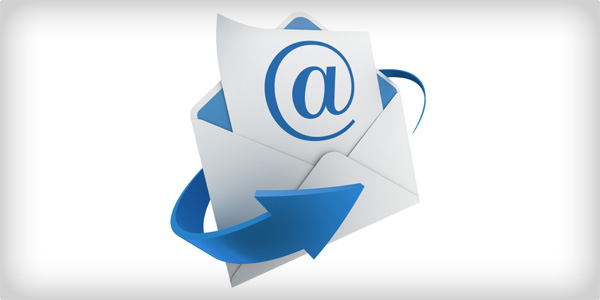LinkedIn is great for networking, but it can also be an amazing resource for prospecting and lead generation. Let’s look at some facts about its users, courtesy of HubSpot:
-
LinkedIn is patronized by 25% of adult users.
-
46% of online adults with a college degree are on the platform, and 32% of employed online adults.
-
Content consumption on LinkedIn has increased 21% in the past two years.
In other words, the leads on LinkedIn have more buying power, higher earnings potential, and are increasingly looking for content to consume. Turning these users into leads is what marketing on LinkedIn is all about, and recently the platform has created a new tool to help you out: Lead Gen Forms. Let’s dig into this new feature to see how it can work for you.

The Problem with Gated Content
If you’re pursuing a content marketing strategy, then you also need to have a plan for what to do when someone actually engages with your content. You have to find a way to convert those blog visits into something more actionable. One of the most common techniques is to gate your content with a strong call to action that offers your audience something of value (an article, an eBook, a whitepaper, etc.) in exchange for a bit of information about them, which can hopefully help you warm them up as a lead.
The problem is that if you’re a user who doesn’t have a lot invested in a brand and you just want to read a specific piece of content, it’s pretty annoying to have to fill out a form. For one thing, you might not trust them to act responsibly with your information. This is something that content is supposed to do over time—build trust. The more details the form requires, the more likely a visitor is to bolt without giving a brand a shot.
The other challenge has to do with where most traffic is coming from in 2017. LinkedIn is a great place for sponsored content, especially for B2B where it is the source of around 80% of leads. However, according to LinkedIn’s own marketing metrics, 57% of all traffic to the site is coming from mobile devices. Inputting long strings of text simply takes longer when you’re doing it on mobile, and people run out of patience fairly quickly.
Lead Gen Forms Remove Friction
Solving these problems is where LinkedIn’s Lead Gen Forms can be a real lifesaver. Lead Gen Forms remove the friction around users giving you some information about themselves.
Instead of having to place a call to action on your site, Lead Gen Forms bring up an auto-populated form on LinkedIn whenever a user clicks on your sponsored content. The form is filled out with details from their profile, so they can see every piece of information they’re giving you, but the only thing they have to do is click “submit.” You get the data you need, and they get the content they’re looking for.
Furthermore, because all this occurs on LinkedIn, you get the added credibility from the platform. The forms fit into LinkedIn’s UI, and the familiar branding makes users much more likely to trust you with their information.
If you’re a business that is trying to grow, collecting this information is vital. You need to rely on a personal touch, and you can only pull that off if you can get in touch with the people who are interested in you. Whether it’s a special offer to convert someone on the fence, or an in-store event to focus on upping your hyper-local marketing game, a solid mailing list is the key to offering a personal and unique experience.
Other Advantages of Working with LinkedIn
At the same time, working with LinkedIn has other advantages beyond increasing your success rate at getting the info you need. For one thing, because it’s a professional network, LinkedIn users tend to keep their profiles very up-to-date. This means that you can be sure that the information you get is accurate and actionable.
Another great feature that LinkedIn gives you is analytics that let you take a closer look at how all of your sponsored content is performing. You can split this data out into metrics, which helps you adjust what you’re doing to take advantage of what actually works, and fix what doesn’t. According to LinkedIn’s guide, here are some measurables you should take into account:
-
Leads: The total number of leads that your campaign has collected in the specified time period.
-
Lead Form Opens: The number of clicks to open your form, including clicks on the CTA, intro text, ad title, and image.
-
Lead Form Completion Rate: The percentage of open forms that were submitted to you.
-
Cost per Lead: The amount you’ve spent per lead collected.
The cost per lead metric is especially helpful for small businesses looking for the most bang for their buck because it gives you a concrete, transparent view of what your ROI looks like. Finally, all of this data can plug directly into your CRM or marketing automation platform, allowing you to integrate these new leads into what you’re already doing.
What You Can Do Right Now
LinkedIn is the perfect platform for content marketing because its users are exactly the type of audience you want to target, and they’re often on the site specifically looking for useful content. However, things get tricky when you try to get a user to give you information in exchange for what you have to offer. There’s too much friction, especially if they’re on mobile. If you streamline the process by presenting the user with a pre-filled form, you can increase your success rate, build your mailing list, and turn your content marketing into conversions.
-
LinkedIn is a great place for content marketing, and Lead Gen Forms make it easier to take the next step and collect your audience’s information.
-
The LinkedIn brand provides trust that makes someone more likely to give you their info.
-
Because people keep their profiles more up-to-date, your data will be more accurate.
-
Use the built-in analytics features to look at what’s working, and what might need an adjustment.


